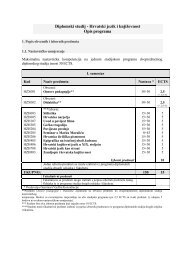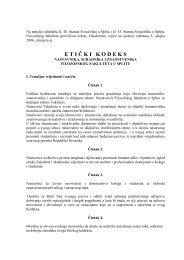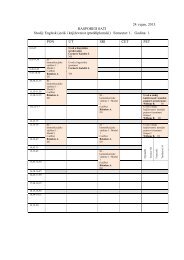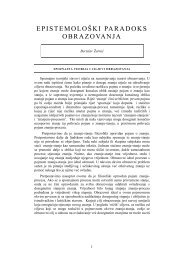Understanding Human Communication
Understanding Human Communication
Understanding Human Communication
Create successful ePaper yourself
Turn your PDF publications into a flip-book with our unique Google optimized e-Paper software.
302 PART THREE COMMUNICATION IN GROUPS<br />
CULTURAL IDIOM<br />
welsh on: fail to fulfill<br />
time cushion: extra time<br />
allowance<br />
EVALUATE POSSIBLE SOLUTIONS After it has listed possible solutions,the group<br />
can evaluate the usefulness of each. One good way of identifying the most<br />
workable solutions is to ask three questions.<br />
1. Will This Proposal Produce the Desired Changes? One way to find out is to<br />
see whether it successfully overcomes the restraining forces in your force field<br />
analysis.<br />
2. Can the Proposal Be Implemented by the Group? Can the members<br />
strengthen impelling forces and weaken restraining ones? Can they influence<br />
others to do so? If not, the plan isn’t a good one.<br />
3. Does the Proposal Contain Any Serious Disadvantages? Sometimes the<br />
cost of achieving a goal is too great. For example, one way to raise money for<br />
a group is to rob a bank. Although this plan might be workable, it raises<br />
more problems than it solves.<br />
IMPLEMENT THE PLAN Everyone who makes New Year’s resolutions knows the<br />
difference between making a decision and carrying it out.There are several important<br />
steps in developing and implementing a plan of action.<br />
1. Identify Specific Tasks to Be Accomplished.What needs to be done? Even a relatively<br />
simple job usually involves several steps. Now is the time to anticipate<br />
all the tasks facing the group. Remember everything now, and you will<br />
avoid a last-minute rush later.<br />
2. Determine Necessary Resources. Identify the equipment, material, and other<br />
resources the group will need in order to get the job done.<br />
3. Define Individual Responsibilities. Who will do what? Do all the members<br />
know their jobs? The safest plan here is to put everyone’s duties in writing,<br />
including the due date.This might sound compulsive, but experience shows<br />
that it increases the chance of having jobs done on time.<br />
4. Provide for Emergencies. Murphy’s Law states,“Whatever can go wrong,will.”<br />
Anyone experienced in group work knows the truth of this law. People forget<br />
or welsh on their obligations, get sick, or quit. Machinery breaks down.<br />
(One corollary of Murphy’s Law is “The copying machine will be out of order<br />
whenever it’s most needed.”) Whenever possible, you ought to develop<br />
contingency plans to cover foreseeable problems.Probably the single best suggestion<br />
we can give here is to plan on having all work done well ahead of<br />
the deadline,knowing that,even with last-minute problems,your time cushion<br />
will allow you to finish on time.<br />
FOLLOW UP ON THE SOLUTION Even the best plans usually require some modifications<br />
after they’re put into practice.You can improve the group’s effectiveness<br />
and minimize disappointment by following two steps.<br />
1. Meet Periodically to Evaluate Progress. Follow-up meetings should be part of<br />
virtually every good plan.The best time to schedule these meetings is as you<br />
put the group’s plan to work. At that time, a good leader or member will<br />
suggest:“Let’s get together in a week (or a few days or a month, depending<br />
on the nature of the task).We can see how things are going and take care of<br />
any problems.”<br />
2. Revise the Group’s Approach as Necessary. These follow-up meetings will<br />
often go beyond simply congratulating everyone for coming up with a good<br />
solution. Problems are bound to arise, and these periodic meetings, in which<br />
the key players are present, are the place to solve them.

















